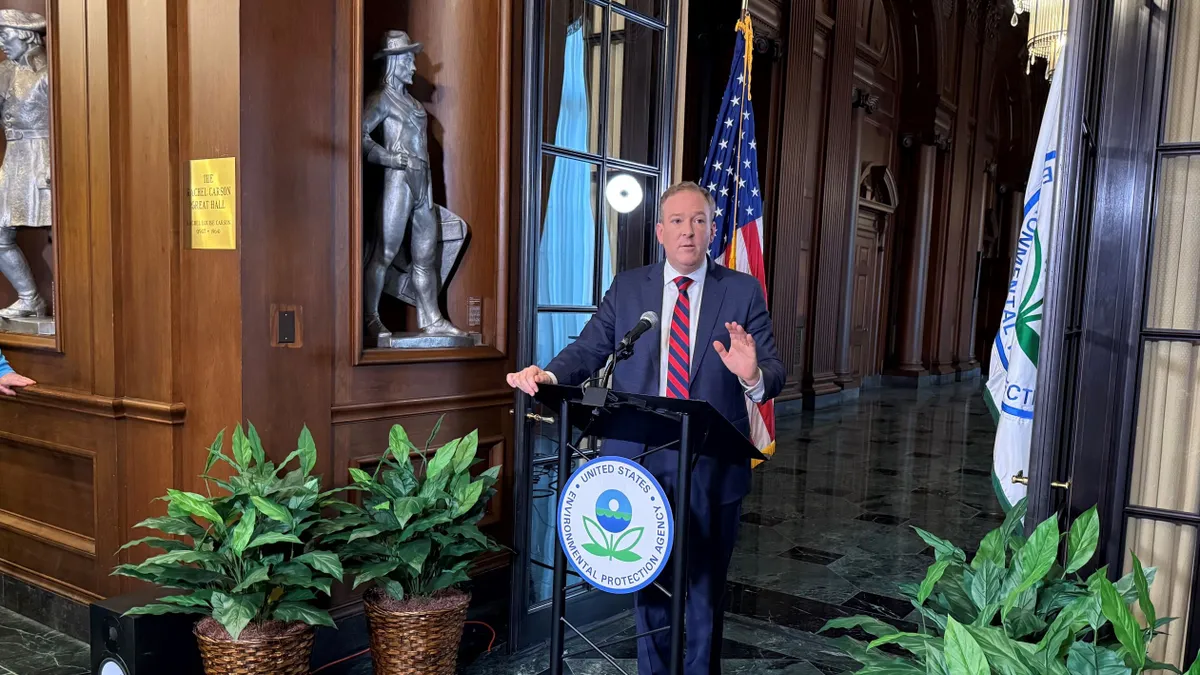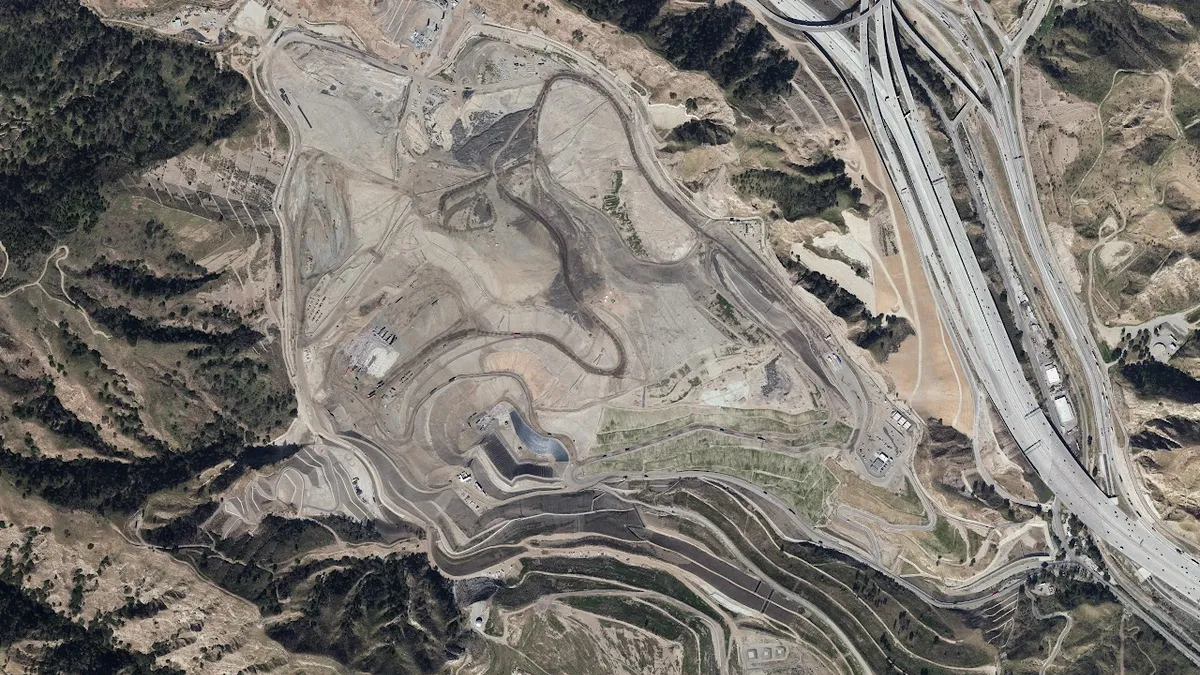Waste Connections is currently conducting community outreach measures at two notable sites due to neighbors’ environmental concerns.
Waste Connections has hosted a number of community meetings this month as part of its effort to expand its Seneca Meadows location in New York and extend its permit that is set to expire in 2025; but it’s facing significant community pushback. Meanwhile, it was ordered to mitigate worsening odor issues at its Chiquita Canyon location in California through a Sept. 7 agreement with the local air quality board. The company must update residents regularly on its progress.
Landfill: Seneca Meadows
Location: Waterloo, New York
Waste Connections’ Seneca Meadows landfill — the largest landfill in New York — has long faced pushback from residents as it seeks to expand its footprint and renew its permit through 2040. That permit is set to expire in 2025.
Waste Connections’ proposed expansion would add 70 feet in height and 47 acres of new landfill liner, mainly in the valley between two existing landfill slopes.
Waste Connections has participated in numerous community meetings to discuss their plans to expand, several of which were mandated by the state Department of Environmental Conservation as a forum for community feedback. Community groups such as Seneca Lake Guardian have called for protests at such meetings, including the most recent one on Sept. 21.
Expansion opponents say the landfill causes numerous ongoing environmental and health problems, and they have long complained about truck traffic and odors. The town board has agreed to study reports of several instances of lung cancer near the landfill.
But some proponents believe not approving the proposal could affect the town’s budget and economy, as Waste Connections already pays host benefits, donates to local causes and employs about 100 people, Spectrum News 1 reported.
The Seneca Falls Town Board has yet to warm to Waste Connections’ most recent expansion proposal. The board voted earlier this month to table a hosting agreement offering the town a total of $173 million over 15 years, including signing bonuses when key permits are issued.
Under the agreement, meant to take effect if DEC approves the Seneca Meadows expansion, Waste Connections would agree to multiple methods for controlling odor and managing complaints, collect the town’s trash for free, restrict truck traffic to certain parts of the town and other promises.
Waste Connections did not respond to a request for comment as of press time, but landfill District Manager Kyle Black told Spectrum News 1 that landfill operations follow strict DEC regulations, and “those requirements are met every day, every month, every quarter, every year.”
Despite the tight permit renewal timeline and public pushback, Waste Connections has projected confidence in its renewal and expansion plans. During its second quarter earnings call in August, CEO Ronald Mittelstaedt responded to an analyst’s question about whether the company’s recent acquisition of the Arrowhead landfill in Alabama was done as a reaction to the possibility Seneca Meadows may close at some point; Waste Connections’ acquisition of Arrowhead Environmental Partners in August is partly meant to open up more access in the Northeast.
“Seneca is doing very well,” Mittelstaedt responded. “We're very confident in our position and our expansion there, and [there’s] no real change to that.”
Landfill: Chiquita Canyon
Location: Castaic, California
The 639-acre landfill has been the subject of 2,100 odor complaints this year. Earlier this month, the South Coast Air Quality Management District ordered the landfill to take numerous actions to reduce such odors.
Residents reported experiencing asthma attacks, bloody noses and nausea due to the odors, which reportedly became worse around April, the Los Angeles Daily News reported. AQMD says it has issued 60 violation notices against the landfill this year.
AQMD ordered Waste Connections to conduct more detailed odor surveillance, expand its gas well system and “maximize the use of specified landfill gas flares for combustion of landfill gasses.” Landfill operators are also expected to work with “a committee of experts” to investigate the cause of the unusually elevated sulfur levels and report findings by April 30, 2024.
AQMD found that landfill gas at the facility contained elevated levels of dimethyl sulfide, which Chiquita Canyon’s gas treatment system isn’t designed to remove. In an update on the landfill’s odor mitigation website, which AQMD ordered the company to maintain regularly, Waste Connections says the unusual levels of DMS likely come from decaying plant matter and from marine microorganisms. Waste Connections is “doing everything in its power to reduce potential odors that may originate from the landfill,” it said. A status hearing will be held on January 16, 2024.






















